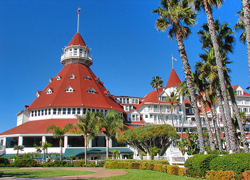Lectures
Lecture 3: Rise of a California Literature: Twain, Harte, Bierce

In January 1848, James Marshall found a few tiny gold nuggets while helping to build a sawmill for John Sutter along the American River northeast of present-day Sacramento. Soon others had found gold, too. Word spread, and the Gold Rush was on.
The Gold Rush changed California dramatically and quickly. In April 1847, according to census records, San Francisco had 79 buildings and perhaps a thousand residents. By December 1849 the population had leaped to an estimated 100,000. California became a state in 1850--it was the first state ever admitted to the Union without first serving time as a territory.
During the Gold Rush and the years following, California evolved into 4 distinct geographical regions:
- The Greater Bay Area, which stretches from Big Sur to Oregon and includes San Francisco;
- The Southland, which begins at Los Angeles and stretches south through San Diego to the Mexican border;
- The Heartland, which includes the state's rural regions, especially the Central Valley
- Wilderness California, which includes the great areas of mountains, deserts, forests, and coastline that are still little populated.
In his book, Many Californias, Gerald Haslam says that there is a fifth region of California which is as important--perhaps more important--than the others: Fantasy California, "the state as state of mind...here imagination, expectation, and disappointment dominate weather and society and landscape."
It is this California that begins to appear in the literature of the state during and after the Gold Rush. The writers who described the rowdy gold camps and mining towns talk again and again of the gulf between expectation and reality, fantasy and failure. We are reading only a representative few of the writers of that time--roughly 1848 through 1900--but in these voices and others, one can hear the personality of the state beginning to emerge. The Bay Area, of course, had the greatest development at this time. Los Angeles was a dusty small town until the early 1900s, and the agricultural areas were just beginning to develop. San Francisco was the place to be. People came to San Francisco from all over the world: Boston, New York, London, Paris, Asia, and they were all tossed together, like an odd salad, by circumstance and natural disaster: fires, floods, mudslides, earthquakes. For some, it was too much, but for every person who left, hundreds more flooded in, drawn irresistably to the excitement and possibility.
Bret Harte arrived in California in 1853. he had a number of jobs, and then went to work for a weekly newspaper, the Northern Californian, in a town then known as Union, now called Arcata. He was forced to flee the town after he wrote an enraged editorial condemning those who had slaughtered almost 200 Wiyot Indians, among them women and infants. He moved to San Francisco and went to work for a journal called The Golden Era and also got a position as superintendent's secretary of the United States Mint. He published stories, poems, and articles in another journal, The Californian, and in 1867, became editor of The Overland Monthly. His stories of the gold camps--especially "The Outcasts of Poker Flats" and "The Luck of Roaring Camp"--made him famous. He wrote about roughnecks, prostitutes, gamblers, and gunfights, and his stories took the genteel American literary establishment by storm.
Mark Twain arrived in California in 1861, and promptly set the state on fire--literally. His campfire started a forest fire near Lake Tahoe that burned several thousand acres.
Twain moved to San Francisco in 1864 where he worked for the Morning Call. In January and February 1865, Clemens visited Angel's Camp, in Calaveras County; several of his friends were mining for gold nearby. There, to pass the time during rainy weather, he listened to miners and others telling tales. These he recorded in his notebook, and they later became the basis for several of his most famous stories, among them "The Celebrated Jumping Frog of Calaveras County."
Twain only stayed in California for three years; his wanderlust was too great to resist, and he moved on to Hawaii.
Harte, and to a lesser extent, Twain, were aware that they were helping to create a "California" literature, which would be a part of "American" literature but would have a distinct character and voice. Both writers were ambivalent about California: they loved and hated it; their stories both reinforce and refute the idyllic vision of California that attracted them and so many others.
Ambrose Bierce came to California shortly after the end of the Civil War, in which he had fought for the Union for four years. He settled in California and wrote articles and reviews for Overland Monthly and the Californian. He also worked as editor for several papers, and later wrote for Hearst's San Francisco Examiner. He wrote a number of notable war stories, including "An Occurrence at Owl Creek Bridge" and "Chickamauga" and also helped refine the horror genre, with stories such as "Moxon's Master." Bierce later worked as an investigative reporter, exposing corruption in the railroad business and other industries. He eventually became disillusioned with the California Dream and left California to live in Washington, D. C. His most satirical work, The Devil's Dicionary, was published in 1906.
Bierce's death is a mystery. He is presumed to have died in 1914 in the Mexican Revolution, but this cannot be verified. He travelled south to Texas and crossed the border into Mexico, and his last letter, dated 1913, was posted there.
If you'd like more information on any of the topics covered in this lecture, go to the Links page. Enjoy!
The information in this lecture is derived in part from the following sources:
~The Literature of California, Jack Hicks
~Many Californias, Gerald W. Haslam
I have been asked if I ever get the DTs; I don't know; it's hard to tell where Hollywood ends and the DTs begin.
~ W. C. Fields
